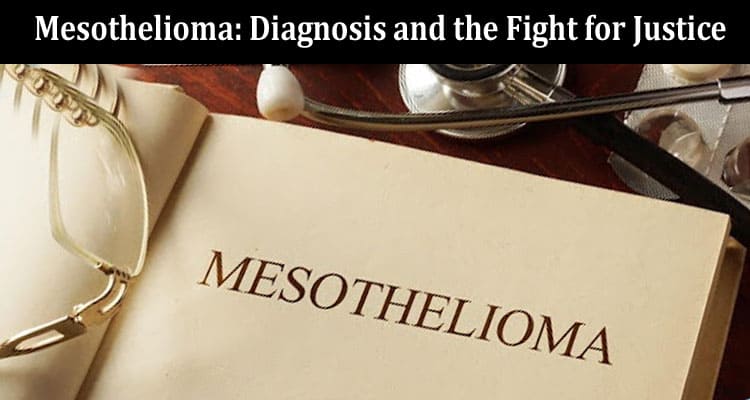A mesothelioma diagnosis sets patients on a grueling path of treatment decisions and legal actions amid chaos and confusion. This aggressive cancer linked to asbestos exposure carries unique challenges. Patients must navigate limited treatment options based on cell types and the staging of tumors. They must quickly seek justice from companies that exposed them to the carcinogen before the statute of limitations expires. Understanding the diagnosis process, the newest therapies showing promise, and securing legal help immediately empowers patients to take control during an overwhelming time. Though the road is tough, knowledge guides patients to wise choices in their fight for life and accountability.
Diagnosing Mesothelioma
Diagnosing mesothelioma can be challenging, as symptoms like shortness of breath, chest pain, and fatigue mimic less serious illnesses. Doctors may initially misdiagnose the disease as pneumonia or lung cancer. Only expert pathological analysis of tissue samples from biopsies can definitively confirm the presence of malignant mesothelioma cells.
Patients must disclose any history of asbestos exposure to raise clinical suspicion. Imaging tests help identify abnormalities requiring a biopsy. If mesothelioma is confirmed, experienced mesothelioma attorneys urge patients to consult a lawyer immediately to start the compensation process before the strict statute of limitations expires. Early and accurate diagnosis is essential to proper treatment and securing legal help in time.
Cell Types
There are three main mesothelioma cell types:
- Epithelioid
- Sarcomatoid
- Biphasic
Epithelioid is most common, making up 50-70% of cases. It responds best to treatment, with a typical life expectancy of 12-27 months following diagnosis.
Sarcomatoid is least common at 10-20% of cases but most aggressive, with only 9-14-month average survival.
Biphasic has both epithelioid and sarcomatoid cells, causing widely varying outcomes. Cell type determines the prognosis and treatment approach.
Staging Mesothelioma
Once a diagnosis is confirmed, doctors determine the cancer stage based on how far it has advanced.
Stage 1 means tumors are localized.
Stage 2 indicates nearby lymph node involvement.
Stage 3 means cancer has spread within the chest or abdomen lining.
Stage 4 means distant metastasis to other organs.
Early stage 1 or 2 diagnosis is crucial but rare, as the vagueness of symptoms contributes to late diagnosis.
Patients with early-stage mesothelioma have the best treatment outcomes. Surgery becomes less effective at later stages.
Stage 4 is considered terminal, with palliative care to keep patients comfortable.
Doctors use imaging scans and biopsies to assign TNM staging scores assessing tumor size, affected nodes, and metastasis.
Treatment Options
Treatment focuses on stopping cancer growth and preserving the quality of life for as long as possible. Multimodal approaches combine:
- Surgery to remove tumors and affected tissue
- Chemotherapy drugs to kill cancer cells
- Radiation targeting cancerous areas
Clinical trials provide access to emerging immunotherapies and experimental drugs. For late-stage patients, palliative care manages pain and symptoms.
Nutritional help prevents wasting. Complementary therapies aid well-being. Patients should consider their age, health, cancer stage, and cell type when weighing treatment options with their medical team.
The Fight for Justice
A mesothelioma diagnosis also means fighting for legal and financial justice. Documenting asbestos exposure from employers becomes vital.
Companies that knowingly exposed workers to the carcinogen can be held liable. Patients who were indirectly exposed to asbestos fibers from a family member’s work clothes may also have a strong case.
As the statute of limitations is limited after diagnosis, finding an experienced mesothelioma attorney is a priority. Lawyers can identify all potentially liable companies and quickly file claims. They know how to prove negligence and maximize payouts from trust funds set up by bankrupt asbestos companies. Experience with litigation and mesothelioma cancer laws can make the difference in acquiring compensation.
Conclusion
The struggles mesothelioma patients face are immense, but knowledge and support can brighten the path. Learning the keys to diagnosis, cell types determining treatment, and staging that guides prognosis allows patients to make informed decisions.
Consulting mesothelioma specialists helps identify emerging therapies in clinical trials.
Connecting with an experienced attorney expedites the legal fight, ensuring families receive fair compensation from negligent companies. Though the battle against mesothelioma is taxing, setting priorities around treatment, family, and financial security can provide comfort. Patients today have the resources past victims lacked. Use them wisely, for time is precious.


